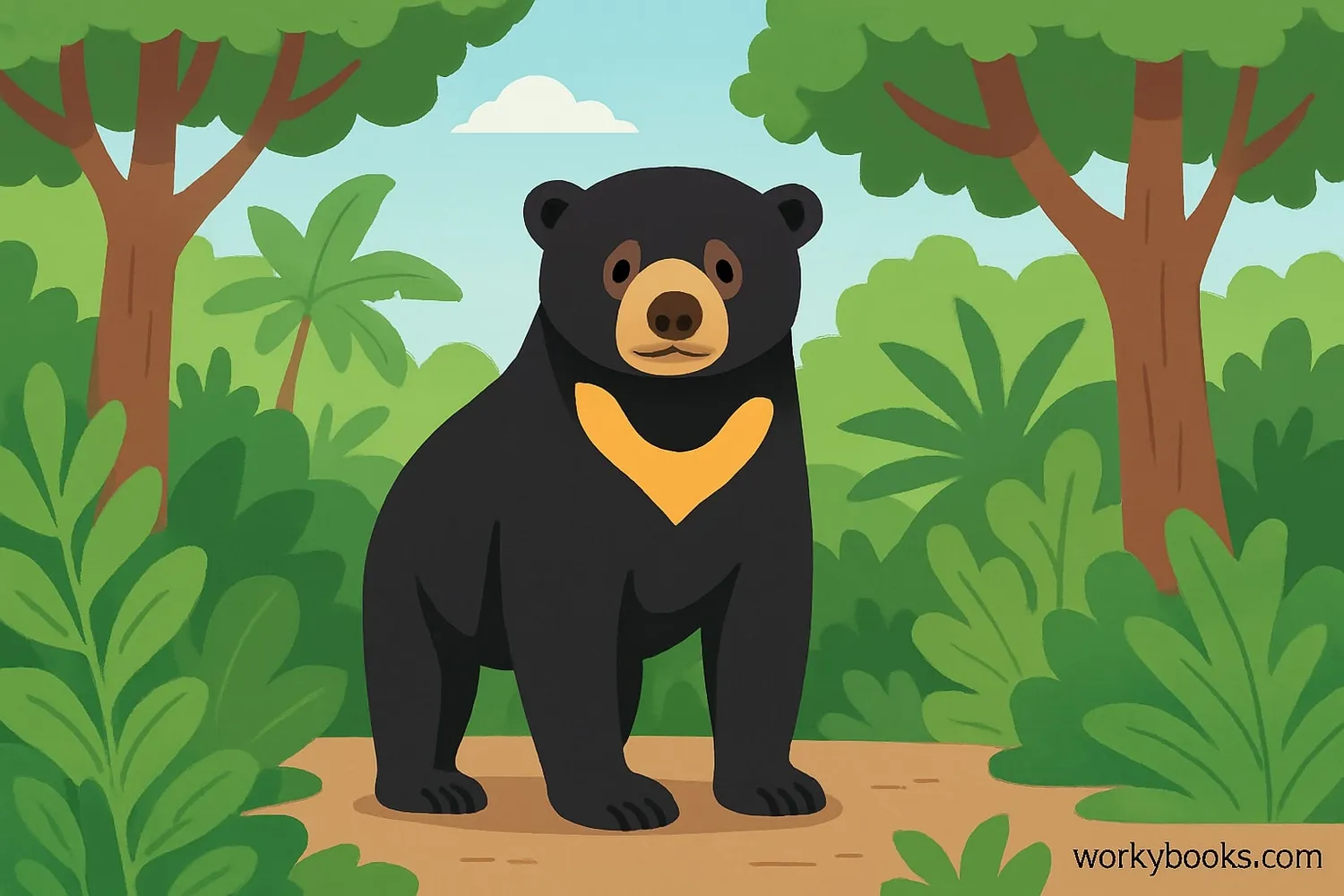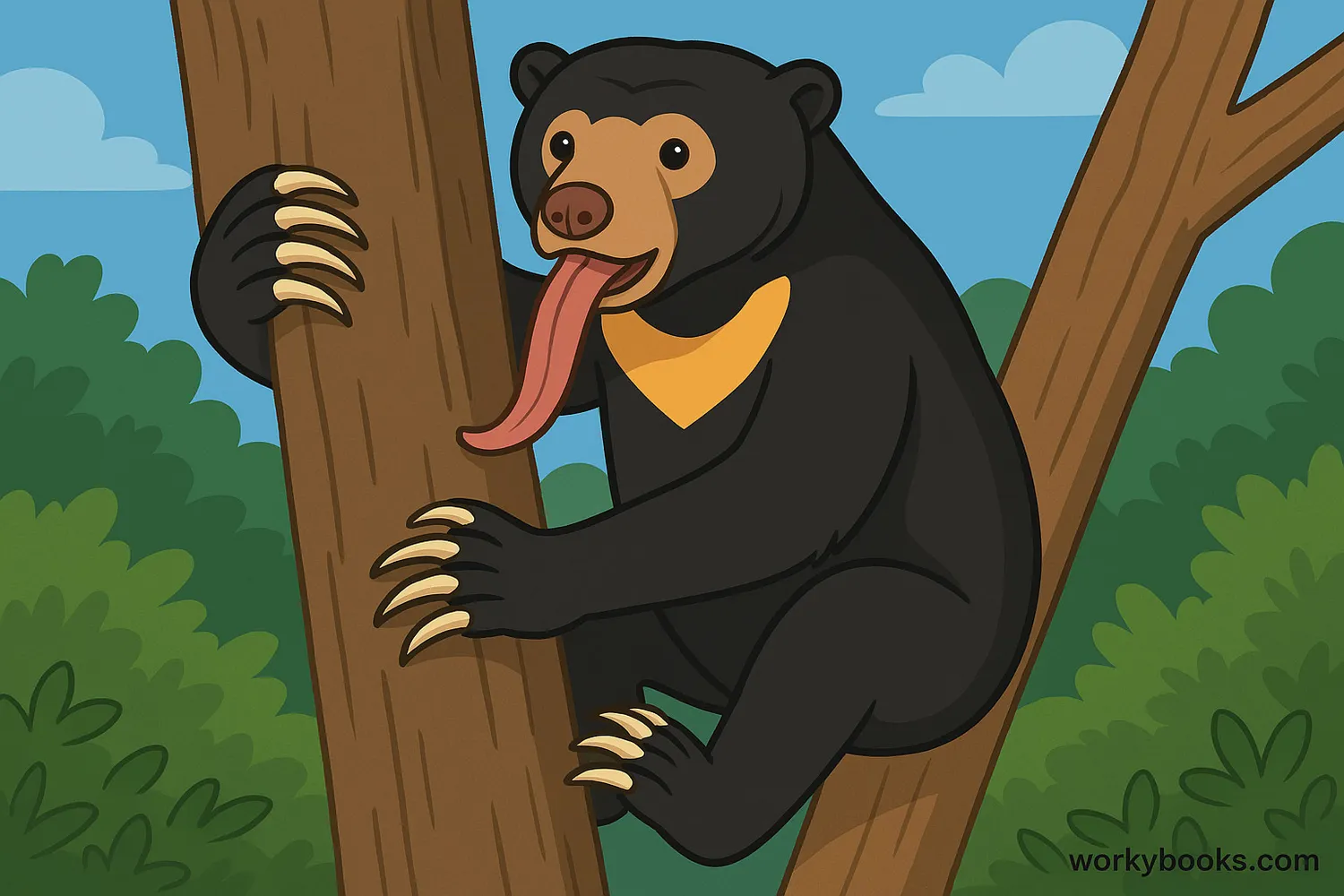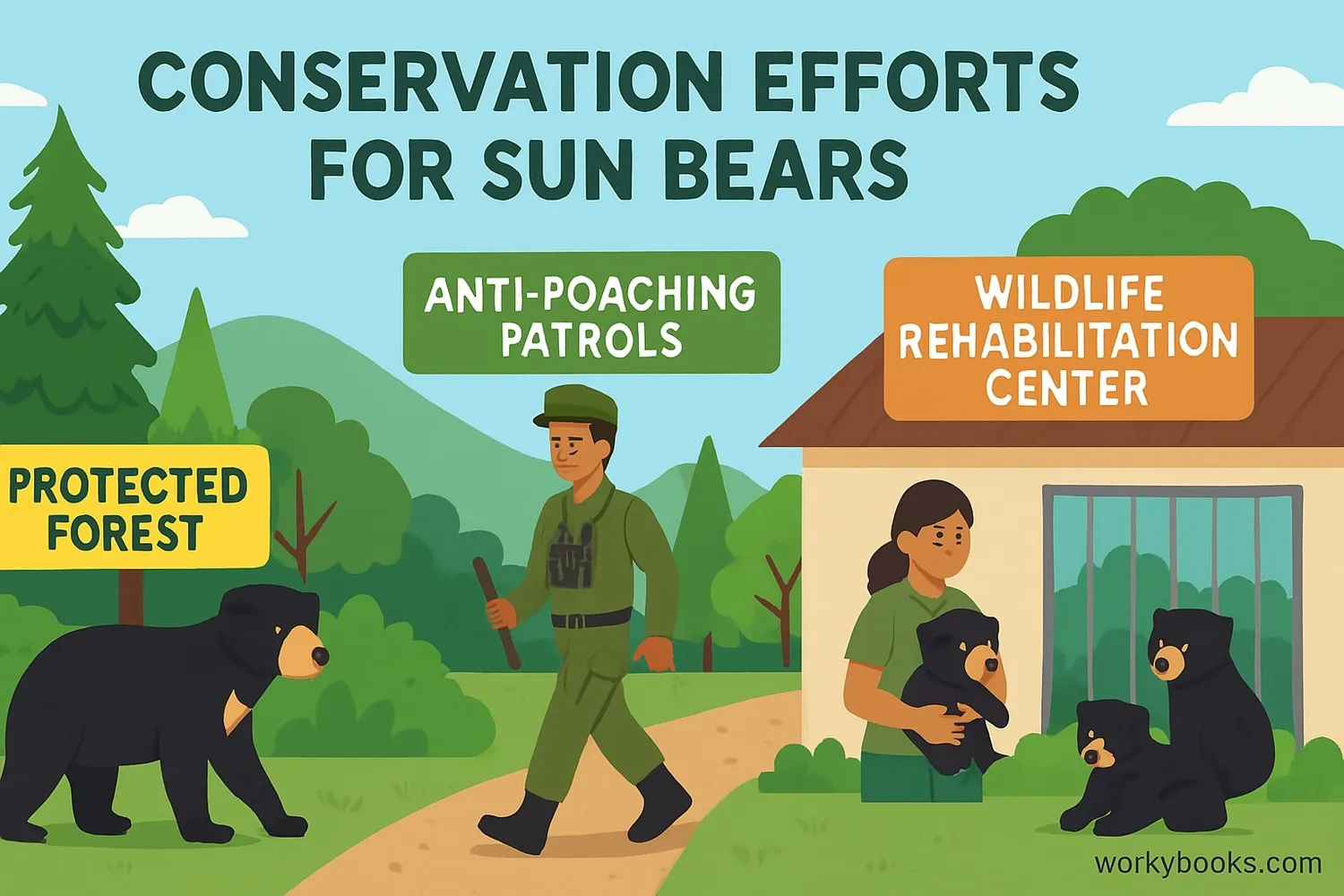The Amazing Sun Bear - Definition, Examples, Quiz, FAQ, Trivia
Discover the world's smallest bear species and its tropical forest home
What is a Sun Bear?

The sun bear (Helarctos malayanus) is the smallest species of bear in the world! Found in the tropical forests of Southeast Asia, these amazing animals are named for the golden or white patch on their chest that looks like a rising sun.
Sun bears are also known as "honey bears" because they love to eat honey and use their incredibly long tongues (up to 25 cm!) to extract it from beehives. Despite their small size (about 4-5 feet long and 60-150 pounds), they have big personalities and play an important role in their forest ecosystems.
Size Comparison:
An adult sun bear is about the size of a large dog - much smaller than grizzly bears that can weigh over 600 pounds!
Special Features & Adaptations

Sun bears have amazing adaptations that help them survive in tropical forests:
Climbing Experts
Strong curved claws and flexible paws make them excellent climbers
Super Tongue
25 cm long tongue for extracting honey from beehives
Powerful Jaws
Strong teeth for cracking hard nuts and fruits
Night Vision
Excellent night vision for nocturnal activities
Sun Mark
Unique chest mark that may help identify individuals
Their sleek black fur is short to help them stay cool in hot tropical climates. Despite their small size, they have loose skin around their neck that protects them from predator bites during fights.
Did You Know?
Sun bears don't hibernate like some bear species because food is available year-round in tropical forests!
Habitat & Diet
Sun bears live in tropical forests of Southeast Asia, including countries like:
Malaysia
Both Peninsular Malaysia and Borneo
Indonesia
Sumatra, Borneo and other islands
Thailand
Forests throughout the country
As omnivores, sun bears eat a varied diet:
Fruits and nuts: Figs, berries, coconuts
Insects: Termites, beetles, bee larvae
Honey: Their favorite treat!
Small animals: Birds, rodents, lizards
Occasionally: Eggs, roots, palm shoots
They play a crucial role in forest ecosystems by dispersing seeds through their droppings and creating nesting sites for other animals when they tear open trees looking for insects.
Conservation Status

Sadly, sun bears are classified as vulnerable by the International Union for Conservation of Nature (IUCN). Their populations are decreasing due to several threats:
Habitat Loss
Deforestation for palm oil plantations and logging
Poaching
Illegal hunting for body parts and the pet trade
Human Conflict
Killed when they wander into human areas
Conservation efforts are underway to protect these special bears:
• Creating protected forest areas
• Anti-poaching patrols
• Rehabilitation centers for rescued bears
• Educating local communities
• Promoting sustainable palm oil production
Organizations like the Bornean Sun Bear Conservation Centre work to rescue and rehabilitate sun bears while studying them to better understand their needs.
How You Can Help:
Look for sustainable palm oil products and support organizations working to protect sun bear habitats!
Sun Bear Knowledge Quiz
Test what you've learned about sun bears with this fun quiz!
Frequently Asked Questions
Here are answers to common questions about sun bears:
Fun Sun Bear Trivia
Discover some amazing facts about sun bears:
Smallest Bear
Sun bears are the smallest of all bear species. Adults typically measure just 4-5 feet in length and weigh between 60-150 pounds - about the size of a large dog!
Super Tongue
Sun bears have the longest tongue relative to body size of any bear species. Their tongue can extend up to 25 cm (10 inches) to help them extract honey from beehives!
Tree Experts
Sun bears are excellent climbers and spend much of their time in trees. They build sleeping platforms high in the trees by bending branches together to form a nest.
Unique Markings
Each sun bear's chest mark is as unique as a human fingerprint! The golden or white crescent-shaped patch varies in size and shape between individuals.


